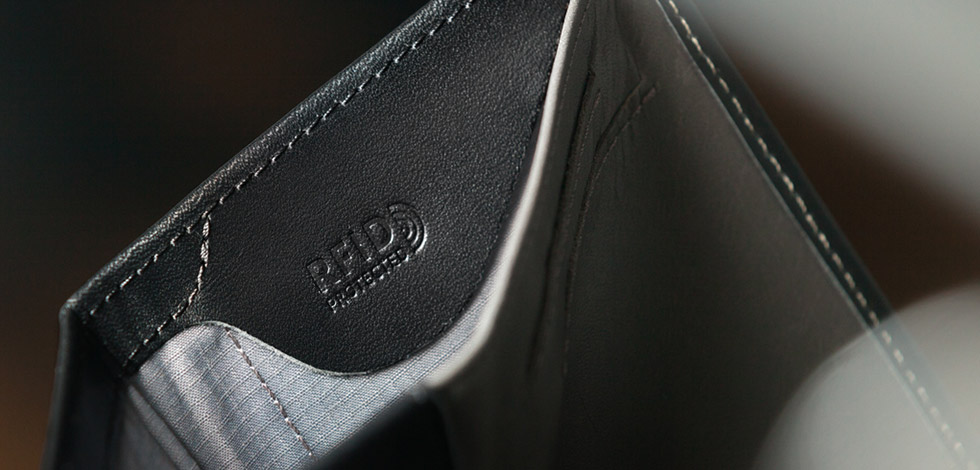A Quick Guide to RFID Security
Keeping an eye on items like bank cards and passports can thwart sticky-fingered pickpockets. But what about the thieves that don’t need to get that close? Many cards and passports use RFID technology, and some of them are open to RFID theft without those items ever leaving your person. So what exactly is RFID and how do you protect your RFID enabled valuables? Find out with this quick guide to RFID security…
–
What is RFID?
RFID stands for Radio-Frequency Identification. The chip-based technology is used by many industries in many roles and is often used in credit cards or passports to store personal information, which can be transmitted to an RFID scanner.
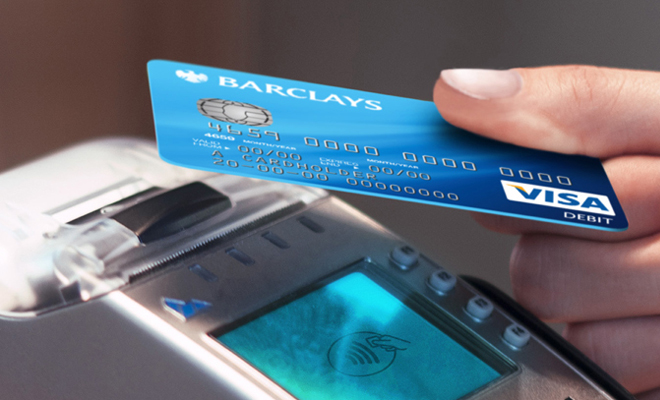
What is RFID theft?
RFID theft (often referred to as skimming) is when someone uses a scanner to read and duplicate the personal information from someone’s RFID enabled gear without their knowledge. While extremely rare “in the wild”, security researchers have demonstrated successful “attacks” (ways of stealing information from some RFID enabled devices) and illegal use of these attacks could result in things like credit card fraud, or identity theft.
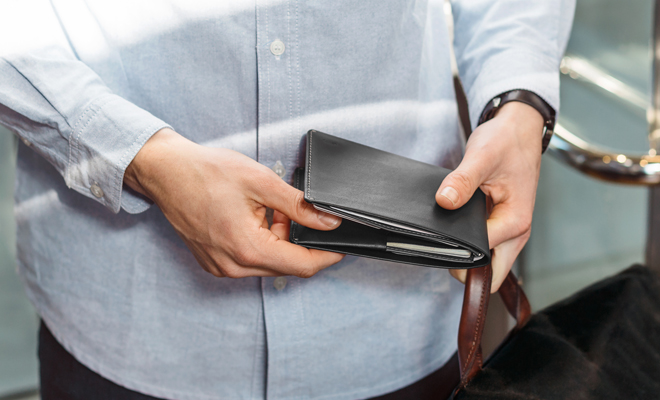
How does wallet RFID protection work?
A material designed to block RFID signals is included in the wallet lining. While your cards or passport are wrapped inside that material, a scanner will not be able to read the information inside.
“RFID theft (often referred to as skimming) is when someone uses a scanner to read and duplicate the personal information from someone’s RFID enabled gear without their knowledge.”
Are cards protected when the wallet is open?
It depends on the design of the wallet, and you should check with the wallet manufacturer. The blocking material only works effectively if your cards or passport are wrapped in it, and some wallets don’t include it in internal panels of their wallets (this can even be a design feature, allowing you to scan a card by opening your wallet without having to take the card out).
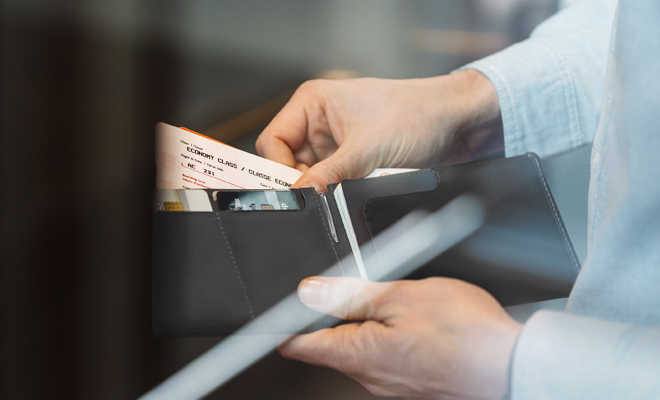
What frequencies do RFID enabled wallets protect?
There are three different types of frequencies: low (LF), high (HF) and Ultra High (UHF).
LF devices operate at 30-300 KHz and have a read distance of up to 10 cm. These are typically used for security passes that give you access to buildings. They tend to be a bit slower than HF enabled cards however they’re stronger, able to be detected through metal.
HF devices can work at a distance of up to 1m, operating at 13.56 MHz. These frequencies are used for credit cards and government issued documents, such as passports.
UHF devices cover ranges from 300 MHz to 3 GHz and can be read from a distance of up to 12m. These are utilised for tracking the post and within electronic toll devices.
When RFID shielding is included as a feature in your wallet, it’s most likely that protection is in HF form; unless stated otherwise.
How much danger do you face if you buy a non-RFID protected wallet?
At present RFID theft appears to be extremely rare. However, security researchers have demonstrated successful attacks against some RFID enabled cards or passports. Those who make RFID enabled cards and passports keep upgrading the technology they use, and both the bad guys and security researchers keep working out how to break it anyway. … and still, RFID theft appears to be extremely rare. You’re going to have to make your own decision on this one.
How do you know if your cards or passport use RFID technology?
If a credit card uses an RFID chip an RFID icon should be easily visible somewhere on the front of the card, like the one below.
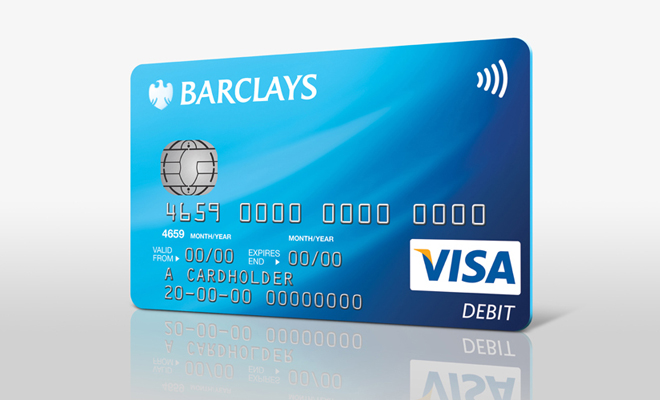

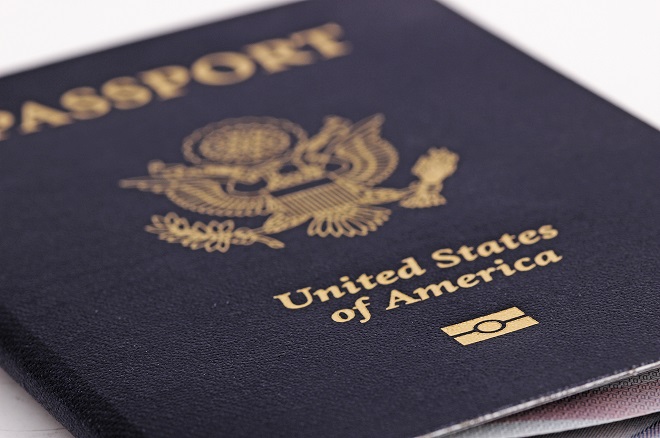

For passports, you’ll notice a small chip icon on the front cover.
If in doubt, ask your card or passport issuer.
Why are brands releasing RFID protection?
There’s genuine demand, because enough people are worried about RFID security. Attacks against RFID-enabled cards have been demonstrated by security researchers and written up online. Although currently – and this could put you at ease – attacks ‘in the wild’ appear to be extremely rare. But hey, if unsavory types do decide to exploit either the attacks we already know about or new ones they discover on an escalated scale, then it could become much more of a practical issue.

Is there an added cost for RFID-protected carry items?
In general RFID-protected carry items tend to cost more than their non-RFID-protected counterparts because adding RFID shielding material increases the cost of production.
“If a credit card uses an RFID chip it should be easily visible in the middle of the card.”
Can I add RFID protection to my current wallet?
You can buy small sleeve inserts that you can wrap your cards in. Because the material is thin, these pouches should fit in the storage section of a number of wallets. Simply search ‘RFID Sleeve’ and review the many options available or try your own do-it-yourself shielding with duct tape and aluminium foil.
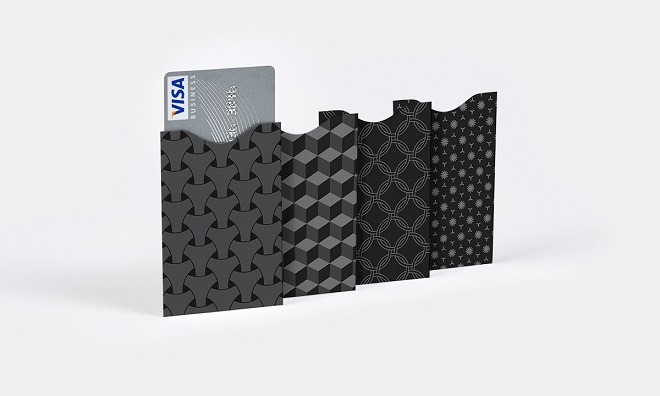





 Carry Awards
Carry Awards Insights
Insights Liking
Liking Projects
Projects Interviews
Interviews
